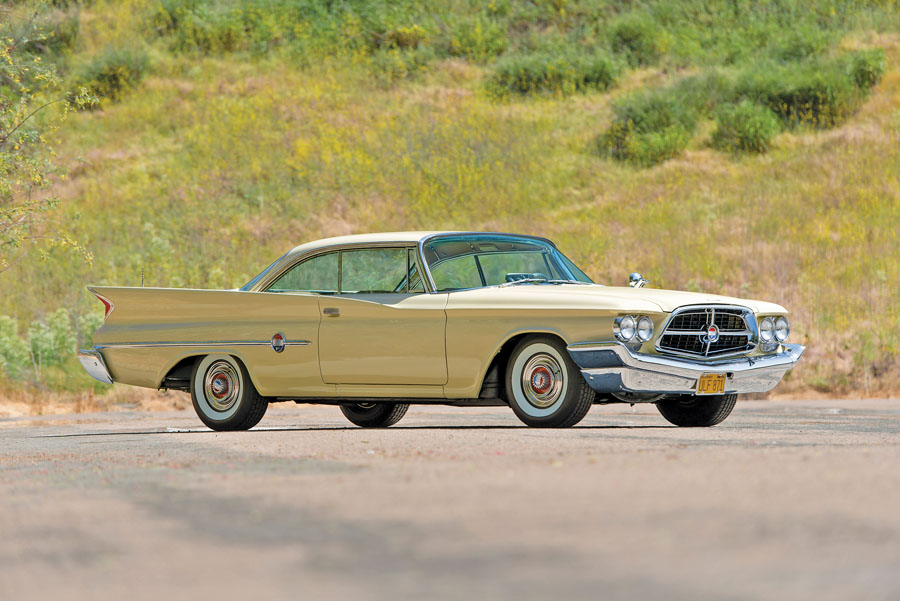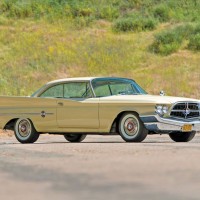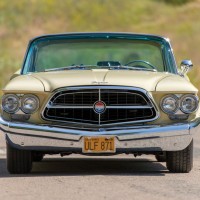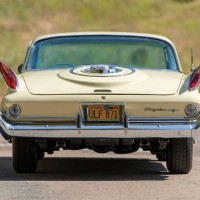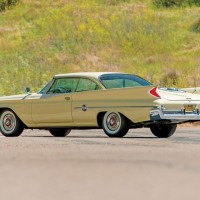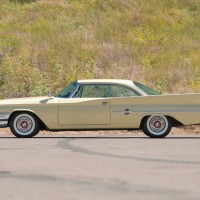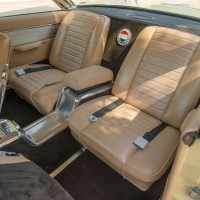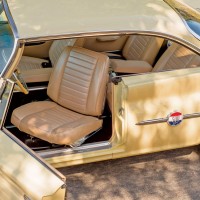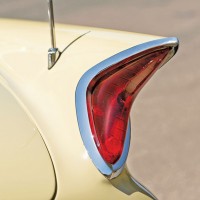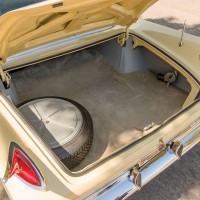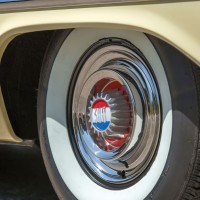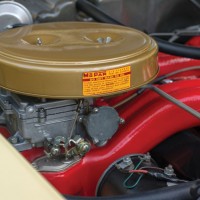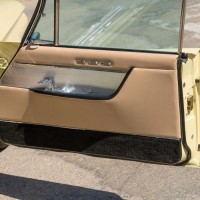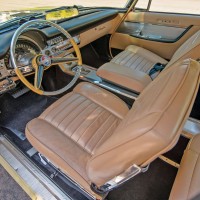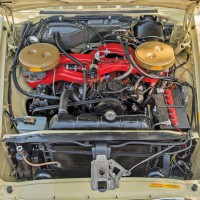SCM Analysis
Detailing
| Years Produced: | 1960 |
| Number Produced: | 964 hard tops |
| Original List Price: | $5,411 |
| SCM Valuation: | $50,000–$80,000 |
| Tune Up Cost: | $350 |
| Distributor Caps: | $45 |
| Chassis Number Location: | Driver’s door post |
| Engine Number Location: | Boss behind water pump |
| Club Info: | Chrysler 300 Club International |
| Website: | http://www.chrysler300club.com |
| Alternatives: | 1960 Cadillac Series 62, 1960 Lincoln Continental, 1959 Chrysler 300E coupe |
| Investment Grade: | B |
This car, Lot 2112, sold for $85,250, including buyer’s premium, at Auctions America’s Santa Monica, CA, sale on July 18, 2015.
Chrysler faced a quandary in the early 1950s. Ford and Chevrolet were on the verge of introducing sporty 2-seater automobiles that would appeal to the younger new-car buyer. Chrysler did not have the financial resources to tool up for a new offering, but they could ill afford to ignore this important market segment.
Chrysler had achieved some degree of success in auto racing with Carl Kiekhaefer, owner of the firm that produced Mercury outboards, leading the way. As the 1955 Chrysler models moved their way through the planning process, their pending competitive disadvantage was a looming concern. There was also demand for a true high-performance offering from Chrysler. Within months, a prototype of what would be the Chrysler C-300 was on the assembly line, and it was publicly announced on January 17, 1955.
It’s a stretch to consider a car based on a Windsor hard top as a sports car, but perception often trumps reality. With a Hemi under the hood and success at the 1955 Daytona Speed Week competition, the C-300 it was touted as a “sports touring car.” Karl Ludvigsen noted in a March 1956 Issue of Sports Cars Illustrated that “it is just as much a sports car as is a Bentley Continental or a 300S Mercedes Benz.”
A race winner
Having won both NASCAR and AAA Stock Car championships in 1955, Chrysler continued C-300 production, but they were now “letter cars” until 1965, when the high-performance Chryslers ended with the 300L. While their racing exploits captured the imagination of younger buyers, they never were a success in the showroom, with only 14,262 hard tops sold in their 11-year history, and over a third of those were sold in the final two production years.
The 1960 300F, the sixth in the line of the alphabet letter cars, was redesigned under the eye of Virgil Exner. It had styling as well as performance and, with the exception of the “toilet seat” spare tire outline in the truck deck, it was a true gentleman’s hot rod.
Gone, however, was the Hemi engine. A new 413-ci Wedge engine, with a Cross Ram induction system — painted red for impact — was under the hood. It had a pair of Carter 4-barrel carburetors on opposite sides of the heads, with 30-inch runners that utilized sonic wave frequencies to compress the air-fuel mixture for greater mid-range performance.
A winner on the show field
The stunning restoration of this 300F was completed in 2004 with the goal of filling the trunk with trophies. A 2,000-hour restoration at a noted marque specialist achieved that objective. This 300F, finished in custom Sunburst Yellow, was well known on the California concours circuit. With few miles showing since restoration, it has been maintained in show-ready condition.
The 1960 300F was expensive when new, with a list price of $5,411 for the hard top, and only 964 were produced. When this example was offered at Auctions America, at no reserve, it only realized $85,250, which had to be a disappointment to the owner.
A 2,000-hour restoration, even at 2004 rates, had to be six figures plus materials. Add in the cost of acquiring the car, and the out-of-pocket cost was at least twice what was realized here.
Stumbling on the block
This is a rare car and in prize-winning condition. Why didn’t it bring more?
Well, 1950s and 1960s cars are, with few exceptions, soft and out of favor.
The 1960 Chrysler 300F had the Cross Ram induction system with sonic-wave runner tubes. Now, would you want to explain all that — or just point to a hulking Hemi engine?
The rear deck treatment — nicknamed “toilet seat” — was a glaring Virgil Exner miscue, and this example had “been there, done that” at almost every event on the West Coast.
The 300F swept the Daytona Speed Week but that was with the unobtainable 400-horse 300F Special. All of these factors played in favor of the buyer, and the seller was left with a bunch of trophies and a hole in his pocketbook. ♦
(Introductory description courtesy of Auctions America.)
